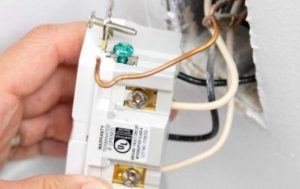Identifying the Correct Ground Wire Color Code
In the intricate world of electrical wiring, the color code of wires serves as a universal language, ensuring safety and efficiency in installations and maintenance. Among these, the ground wire stands out for its critical role in protecting against electrical shocks and fires. Thus, identifying the correct color code for a ground wire is paramount for anyone dealing with electrical systems. Let’s delve into the specifics of the ground wire color code and its importance.

The universally recognized color for ground wires in electrical systems is green, or green with a yellow stripe. This color coding is designed to provide a clear, unambiguous identification of the ground wire, distinct from live (hot) and neutral wires, which are typically black or red, and white or gray, respectively.
Why Is Ground Wire Color Coding Important?
Color coding streamlines the installation, inspection, and maintenance of electrical systems by providing a quick way to identify the function of each wire. For ground wires, the green or green/yellow color signifies a safety feature, a pathway designed to carry any fault current safely to the earth, thus preventing electric shock.
Global Standards and Variations
While the green or green/yellow color for ground wires is widely recognized, it’s essential to note that electrical standards can vary by country. In the United States, the National Electrical Code (NEC) mandates the use of green or green with a yellow stripe for grounding conductors. Similar standards are observed in many other countries, though there are exceptions and variations. Always consulting the local electrical codes is advisable for the most accurate guidance.
What is the proper color code for a ground wire? Recognizing this color code is not just about following regulations; it’s about ensuring the safety and integrity of electrical systems. Whether you’re a professional electrician, a homeowner doing DIY repairs, or simply someone interested in understanding more about how electrical systems work, knowing the ground wire color code is fundamental.
Ensuring Compliance and Safety
To guarantee that electrical work is safe and up to standard, always:
- Check Local Regulations: Before starting any electrical project, verify that you’re familiar with the local codes and standards, as these can dictate specific requirements for wire color coding.
- Use the Right Tools: Employ proper tools and safety equipment when working with electrical wiring. This includes using a multimeter to verify live wires and ensure all connections are correct and safe.
- Consult a Professional: If there’s ever any doubt about wiring or safety, it’s best to consult with a professional electrician. The cost of professional advice can save much more in the long run by preventing electrical accidents or faulty installations.
Identifying the correct ground wire color code is a fundamental skill for safe electrical work. By adhering to this standard, individuals can ensure the safety of electrical installations, protecting both people and property from the dangers of electrical faults.
